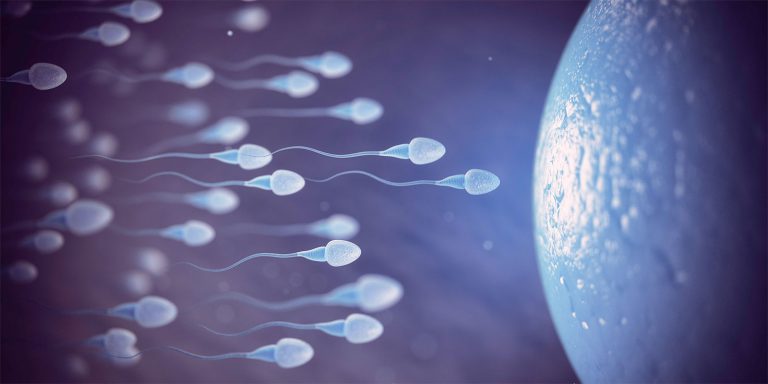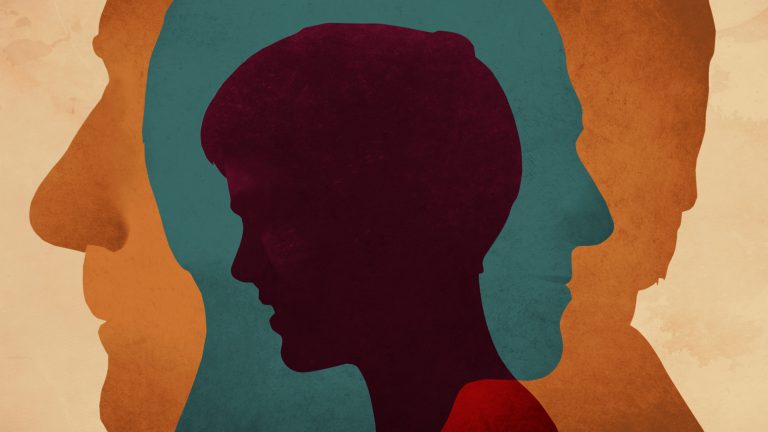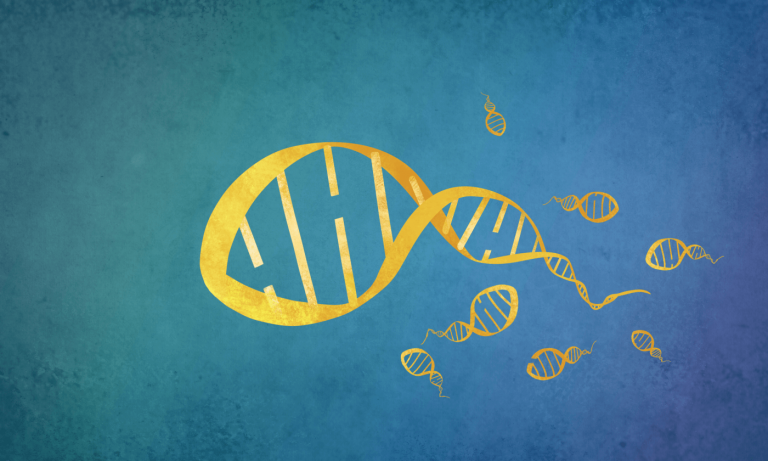Sperm morphology refers to the size and shape of sperm. A normal sperm has an oval head and a single long tail. Abnormally shaped sperm might have more than one tail or a crooked head. Having an abnormal shape can make it difficult for sperm to penetrate an egg.
So, how do you know what shape your sperm are, and what should you do if they’re abnormal? Here, we’ll go through everything you need to know about sperm morphology and its effect on fertility. Let’s go!
Measuring Sperm Morphology
Sperm morphology is one of the typical measures included in a standard semen analysis, along with semen volume, total sperm number, sperm concentration, vitality (percent alive), and motility (movement). Morphology is shown as the percentage of sperm that appear to have a “normal” shape within the semen sample.
All males, whether fertile or infertile, will have varying amounts of abnormally shaped sperm. According to the World Health Organization (WHO) guidelines, a count of 4% normally shaped sperm is the threshold required to have what is considered normal morphology. If an individual has less than 4%, they may receive a diagnosis of teratozoospermia.
However, many physicians use the Kruger Strict Criteria for a more detailed view of fertility potential. According to these criteria, 14% or more of normal morphology is a better indicator of fertility.
- 14+% of normal morphology: high probability of fertility
- 4-14% of normal morphology: fertility slightly decreased
- 0-3% of normal morphology: fertility extremely impaired
To determine this number, lab technicians usually put a small amount of the semen sample on a glass slide. Then, they stain it with a dye that helps make individual sperm visible under the microscope. The technicians count how many normal form sperm they can see, typically out of 200 or more on one slide. They then calculate the percentage of normal sperm. Doing it manually like this can leave room for human error. Computer-aided sperm morphometric assessment (CASA) technology can be used instead to get a more precise and reliable result.
What is the Normal Shape of Sperm?
A sperm may seem like a simple form, but there are actually many requirements for it to be considered the “normal” shape. According to Medical News Today a sperm must have:
- A head that is smooth-rimmed with an oval shape (2.5-3.5 micrometers (μm) wide and 5-6 μm long)
- An acrosome tip covering 40-70% of the sperm head (this is a membrane with enzymes that help penetrate an egg)
- No large vacuoles on the head (fluid filled organelles) and less than two small vacuoles covering no more than 20% of the head
- The segment between the head and tail, known as the midpiece, should be a similar length to the head but slimmer
- A tail that is uncoiled, thinner than the head and midpiece, and 45 μm-long
- No head or tail defects
What are the Issues With Abnormally Shaped Sperm?
Not all sperm are created equal. The shape of a sperm can have varying implications on the sperm’s ability to penetrate the egg, pass on genetic information, or move around. For example, the sperm holds all of its genetic material within its head. The shape of the head can indicate the following issues:
- Head is too big = may carry extra chromosomes, caused by genetic mutation
- Head is too small = may have defective enzymes needed to enter egg, or may be missing genetic material
- Head is extremely small (pinhead sized) = may contain minimal to no genetic material, may be linked to diabetic condition
- Head is cigar shaped = may contain abnormally packaged genetic material, may be linked to over exposure of the scrotum to high temperatures
- Head is thin, narrow shape = may contain broken DNA
- Head is too round = may be missing enzymes needed to activate fertilization process, or may be prematurely breaking down its own nucleus
- No head = no genetic material or chromosomes
- Multiple heads = linked to exposure to toxic chemicals, heavy metals, or smoke
Similarly, the tail of the sperm functions to propel the sperm forward as it swims toward its ultimate destination, the egg. Potential issues with the tail include:
- No tail = inability to move
- Multiple tails = may have lower ability to move and higher rate of DNA fragmentation
- Swollen tail or midpiece = may be linked to defective mitochondria or centrioles
- Coiled tail = inability to move, may be due to heavy smoking, presence of bacteria, inhospitable seminal fluid conditions
- Short tails = low or no inability to move, may be linked to chronic respiratory disease or genetic conditions
How Does Sperm Morphology Affect Fertility?
Some defects in sperm morphology may make it more difficult to achieve pregnancy. Abnormal morphology may also make some kinds of infertility treatments less effective. At least one study has shown that sperm morphology at less than 4% can have a significant negative impact on fertilization rates for IVF.
However, a high percentage of abnormally shaped sperm doesn’t necessarily mean an individual will be completely unable to conceive. Another study indicated that when undergoing IVF, couples with teratozoospermia (less than 4% normal morphology) had fewer top-quality embryos. Babies born from IVF to couples with teratozoospermia tended to have lower birth weights if more than one baby was born at once. Nevertheless, there were no significant differences in fertilization rate, embryo development, implantation rate, or overall pregnancy rate compared to couples with normal sperm.
When undergoing IVF with ICSI, there were no significant differences in pregnancy outcomes or newborn health between couples with teratozoospermia and those with normal sperm. Additionally, there was no higher risk of birth defects in babies born from either IVF or ICSI when the father had teratozoospermia.
Therefore, the study suggests that while abnormal sperm shape may elongate the fertility journey, it doesn’t seem to have major negative impacts on the health of the resulting babies.
Improving Sperm Morphology
To avoid possible complications due to abnormal shape, men may take a couple of steps to improve their morphology. In some cases, adjusting daily habits surrounding nutrition, exercise, caffeine, alcohol, and smoking may help to enhance sperm health. Avoiding harmful toxins, pollutants, and overexposure to heat as much as possible can also help. In other cases where factors affecting sperm morphology can’t be controlled, such as age or genetic conditions, assisted reproductive technology (ART) can be used to achieve pregnancy.
What Should You Do Next?
Understanding sperm morphology is important for individuals and couples navigating the journey of conception. We’ve just explored the fundamentals of sperm morphology, its measurement, the intricate requirements for sperm to be considered normal in shape, and the potential implications of abnormal sperm morphology on fertility in general. Now it’s your turn to find out as much information as possible about your unique biology. Make sure to speak to your fertility specialist about proactive and comprehensive sperm testing.







